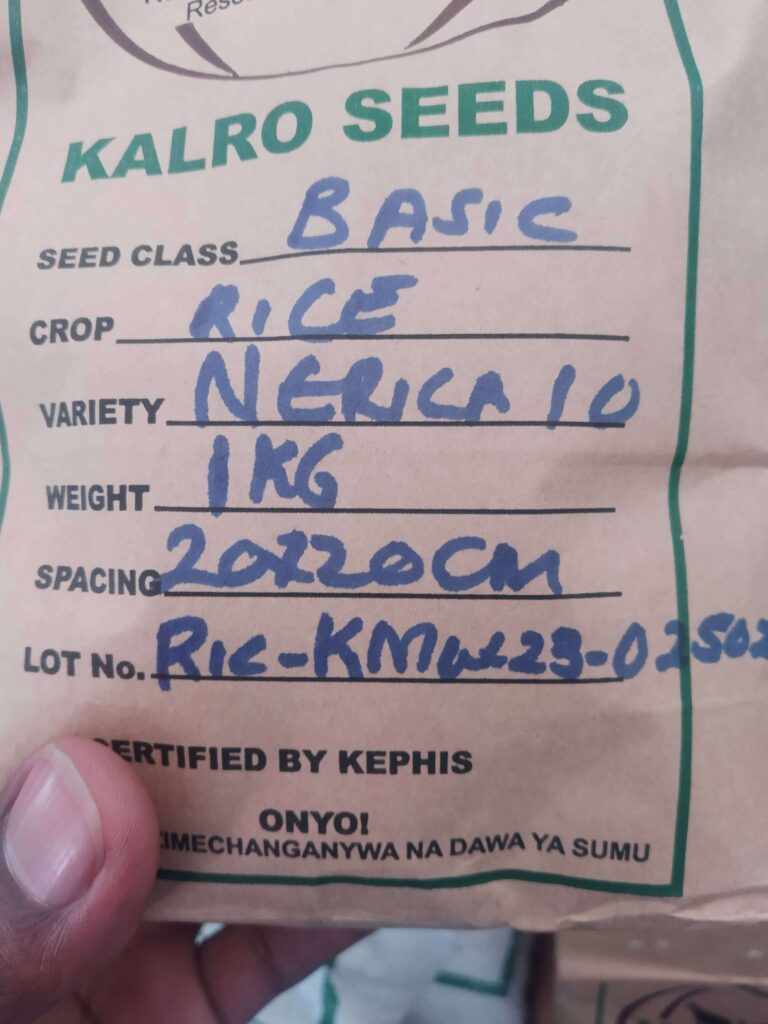With large tracts of land suited to rice production as well as ideal weather conditions, Western Kenya holds the key to low-cost rain-fed rice production enabling internal self-sufficiency.
Kenya produced 186,000 metric tonnes(MT) of rice last year. Just 10 per cent of this was realised in the country’s Western region.
According to the International Rice Research Institute (IRRI), a lack of varieties with traits suited to being grown and consumed in the region has been the leading cause for the low demand and competitiveness of locally-produced rice leading to the bulk of it being sold to neighbouring countries at low prices to the detriment of local farmers.
Related News: Marsabit pastoralists adopt rice farming as alternative income stream
Related News: Mwea rice farmer’s journey from casual labourer to millionaire
“The net effect has been weak linkages in the rice value chain and a weak seed system that could not respond to and meet farmers’ demands. New and high-yielding varieties jointly released by KALRO and IRRI such as IR 05N221 that have consumer-preferred traits offer an opportunity to reverse this trend,” read part of the report.
120,000MT of rice produced internally came from the Mwea Irrigation Scheme in Kirinyaga County. This pales in comparison to the 617,000MT imported into the country.
Currently, the area under rain-fed rice production is 30,000 ha with an average rice yield of one tonne a hectare. This is against a production land potential of one million hectares and a production capability of 7 t/ha.
In contrast, irrigated rice production has a land potential of about 540,000 ha with an optimal production capability of about 10 t ha. This indicates that if the potential of rain-fed rice cultivation is fully explored it will close the production and consumption gap.
Kenya’s National Rice Development Strategy(NRDS)-2 (2019–2030) report noted that there are 23 Counties with suitable agro-climatic conditions and potential for increased rice production. Included were Western region counties of Busia, Bungoma, and Kakamega.
The report noted that these counties offer a route into rain-fed rice production which is less capital intensive than running irrigation schemes.
Rainfed rice can also form new shoots after harvest and even be double-cropped. Individual or community-based water storage and rivers are equally available for supplementary irrigation.
Related News: Rice farmers increase sowing speed with new technology
The government targets the expansion of rice production in this region from 10,631 to 42,000Ha by 2030 while raising on-farm productivity by 75 per cent to 3.5 t/Ha. This is because:
- Rice is more profitable than other crops such as maize and tubers.
- Waterlogged areas can be better utilized through rice cultivation.
- A relatively higher number of on-farm and off-farm jobs can be created through rice cultivation (especially for women and youth) enabling poverty reduction in rural areas
According to a report on Rainfed Rice Farming improved upland rainfed rice varieties suited to Western Kenya include NERICA 4, NERICA 1, NERICA 10, NERICA 11, and NERICA 2, Dourado precoce, and MWUR 4.

The NERICAS have been the most successful lines that have been introduced in Kenya. NERICA 4 has emerged as the best line for most parts of Kenya, with a yield potential of up to 4.4 tons per hectare. The NERICA cultivar combines hardiness, pest, disease, and weed resistance with high yields. They also require small amounts of fertilizer application and are suited to African soils. They mature faster shortening the growth cycle by 30–35 days enabling double cropping and minimising the effects of drought.
Dourado precoce’s attributes include good grain characteristics and early maturity.
All these rice varieties can be purchased from all KALRO Mkulima shops across the country or the Kenya Seeds Company Ltd.
Photo Courtesy
